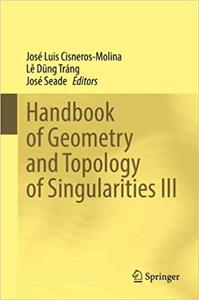

Most ebook files are in PDF format, so you can easily read them using various software such as Foxit Reader or directly on the Google Chrome browser.
Some ebook files are released by publishers in other formats such as .awz, .mobi, .epub, .fb2, etc. You may need to install specific software to read these formats on mobile/PC, such as Calibre.
Please read the tutorial at this link: https://ebookbell.com/faq
We offer FREE conversion to the popular formats you request; however, this may take some time. Therefore, right after payment, please email us, and we will try to provide the service as quickly as possible.
For some exceptional file formats or broken links (if any), please refrain from opening any disputes. Instead, email us first, and we will try to assist within a maximum of 6 hours.
EbookBell Team

4.3
18 reviewsMathematics Subject Classification: 14B05 Singularities in algebraic geometry • 32S15 Equisingularity (topological and analytic) • 14J17 Singularities of surfaces or higher-dimensional varieties
This is the third volume of the Handbook of Geometry and Topology of Singularities, a series which aims to provide an accessible account of the state of the art of the subject, its frontiers, and its interactions with other areas of research. This volume consists of ten chapters which provide an in-depth and reader-friendly survey of various important aspects of singularity theory. Some of these complement topics previously explored in volumes I and II, such as, for instance, Zariski’s equisingularity, the interplay between isolated complex surface singularities and 3-manifold theory, stratified Morse theory, constructible sheaves, the topology of the non-critical levels of holomorphic functions, and intersection cohomology. Other chapters bring in new subjects, such as the Thom–Mather theory for maps, characteristic classes for singular varieties, mixed Hodge structures, residues in complex analytic varieties, nearby and vanishing cycles, and more.
Singularities are ubiquitous in mathematics and science in general. Singularity theory interacts energetically with the rest of mathematics, acting as a crucible where different types of mathematical problems interact, surprising connections are born and simple questions lead to ideas which resonate in other parts of the subject, and in other subjects. Authored by world experts, the various contributions deal with both classical material and modern developments, covering a wide range of topics which are linked to each other in fundamental ways.
The book is addressed to graduate students and newcomers to the theory, as well as to specialists who can use it as a guidebook.